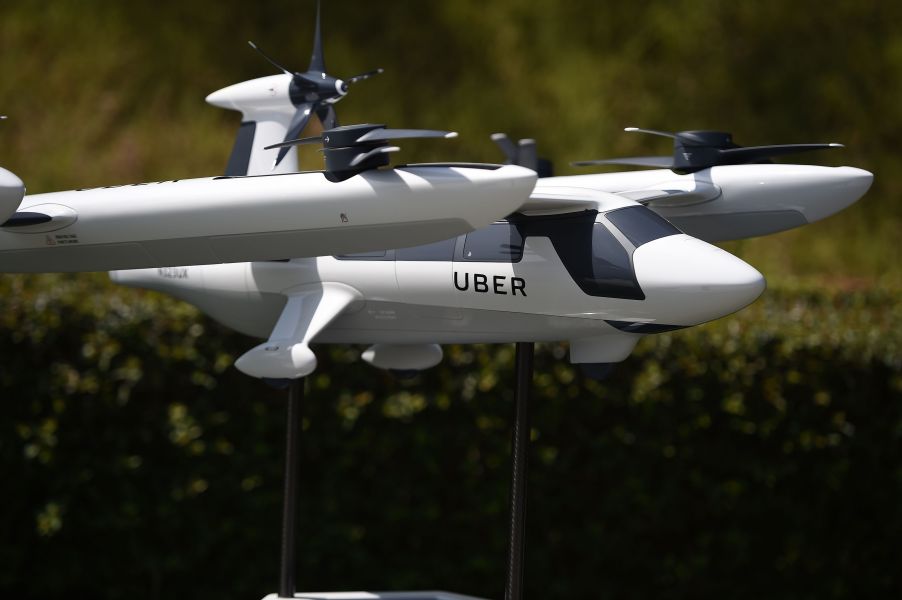
Will Uber Air Taxis Be Ready in Full Force by 2023?
One famous company, Uber, made a billion-dollar business from connecting people. They brought together those who needed a ride to get somewhere with others who had cars that could help them out.
The company, known for its ride-sharing business and food delivery venture, has plans to take to the skies. Now they want to continue to connect people who need rides with a different type of vehicle, one that flies, instead of drives. TechCrunch explains what their newest idea, the Elevate p]Plan, is and what it means for the transporting future.
What is the Uber Elevate Plan?
Uber’s partnering with several companies to use helicopter-like vehicles to take passengers to certain destinations by flying instead of driving. Much like the taxi services they currently use, they plan to take the same concept and add it to aircraft vehicles instead.
While they don’t want to build their own vehicles, they plan to provide support services to other air passenger companies that develop and build all-electric aerial vehicles.
They were hoping to do some testing sometime in 2020, but they wanted to implement the service in 2023. However, the service would only be available in a few select cities, to begin with.
The full-size air taxi model
Uber has already partnered with several companies, like Boeing and Embraer, to develop a concept for the aerial ride-sharing vehicles. However, as TechRepublic reports, Hyundai Motor Co. is the first automotive company to get the go-ahead to mass-produce an aircraft model for Uber’s Elevate program.
Their ability to develop and produce several models of all-electric cars gave them the edge they needed to get the nod from Uber. Hyundai’s passenger air vehicle, or PAV, can go up to 60 mph for trips but could go as fast as 180 mph cruising speed.
Their aircraft has several small rotors, which will reduce noise levels in the city, something unheard of with the larger ones found with the helicopters running on combustible engines. It will take off and land vertically, like our recreational drones, and will be flown with a pilot in the beginning.
Eventually, they plan to make it an autonomous vehicle in the future. As for recharging the batteries, Hyundai claims a 5-7 minute downtime to power them up. If all goes as they have planned, air travel could change the consumer transport industry quite a bit.
With less pollution, noise levels, and no traffic congestion, people could fly where they need to, for much less than an airplane ticket would cost to travel across the country.
Pros and cons of the Uber Elevate Plan
Using an eVTOL, otherwise known as electric vertical take-off and landing aircraft will get passengers to their chosen destination faster than current methods of travel. Even at 60 mph, you could still get across town in mere minutes, versus the 40 minutes to an hour that it could take for some larger cities.
Also, using this kind of aircraft won’t be as noisy as a helicopter or a small plane, eliminating the issues those sound levels could cause. Plus, imagine having the ability to avoid road construction or flooded streets where cars would have to find alternate routes to get you to your destination.
Their Elevate plan has some drawbacks, though. They need to make sure there are charging stations at specific intervals so the aerial vehicle’s batteries never run out of power. Some companies are designing Sky ports, which is like a helicopter pad for the vehicle to land and take-off from and for people to enter and exit the craft.
Those ports would have to be installed in strategic areas, and permission might have to be gained for some. Plus, just because they’re not using roads to get around, it won’t mean that they’re problem-free. Air space will need monitoring by air traffic managers to keep all aircraft vehicles safe while hauling passengers.
Uber’s Elevate program promises to be revolutionary for the transport industry. Whether they meet their goal of implementing the service in 2023, remains to be seen, but since Hyundai, the electric vehicle giant, is already on the ball with a prototype, they may just meet that time frame after all.


